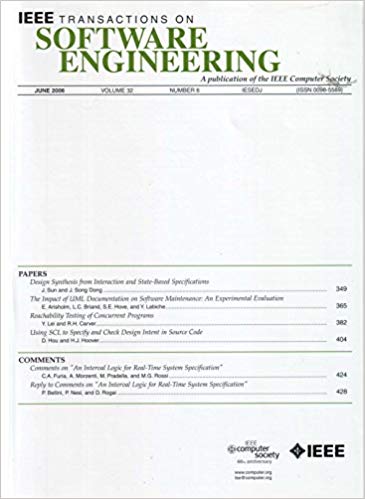持续集成过程中上下文因素的分类
IF 5.6
1区 计算机科学
Q1 COMPUTER SCIENCE, SOFTWARE ENGINEERING
引用次数: 0
摘要
大量的研究表明,持续集成(CI)显著地提高了软件开发的生产力。在软件工程的其他领域的研究已经表明,发现并不总是泛化的,而且经常局限于特定的上下文。到目前为止,CI研究还没有区分所研究项目的不同背景,例如,不同的领域、人员、技术环境或文化。我们需要通过考虑影响项目如何实现持续集成的相关上下文来扩展持续集成理论。虽然现有的研究含蓄地涉及上下文,但它们往往缺乏一致的术语或依赖经验而不是标准化的方法。在本文中,我们通过开发CI领域内相关上下文因素的分类法来弥合这一差距。使用扎实的理论,我们分析了同行评审的研究,并通过从业者调查验证了CI的上下文因素的综合分类。生成的分类法包含多个细节级别,主要维度是Product、Team、Process、Quality和Scale。该分类法提供了一个结构化的框架来解决CI研究中关于上下文理论的差距。研究人员可以用它来描述发现的范围,并对理论的普遍性进行推理。通过比较其他类似的项目,开发人员可以更有效地选择和重用实践。本文章由计算机程序翻译,如有差异,请以英文原文为准。
A Taxonomy of Contextual Factors in Continuous Integration Processes
Numerous studies have shown that Continuous Integration (CI) significantly improves software development productivity. Research has already shown in other fields of software engineering that findings do not always generalize and are often limited to a specific context. So far, research on CI has not differentiated between varying contexts of the studied projects, which includes, for example, varying domains, personnel, technical environments, or cultures. We need to extend the theory of CI by considering the relevant context that will impact how projects approach CI. Although existing studies implicitly touch on context, they often lack a consistent terminology or rely on experience rather than a standardized approach. In this paper, we bridge this gap by developing a taxonomy of relevant contextual factors within the domain of CI. Using grounded theory, we analyze peer-reviewed studies and develop a comprehensive taxonomy of contextual factors of CI that we validate through a practitioner survey. The resulting taxonomy contains multiple levels of details, the main dimensions being Product, Team, Process, Quality, and Scale. The taxonomy offers a structured framework to address the gap in CI research regarding contextual theory. Researchers can use it to describe the scope of findings and to reason about the generalizability of theories. Developers can select and reuse practices more effectively by comparing to other similar projects.
求助全文
通过发布文献求助,成功后即可免费获取论文全文。
去求助
来源期刊

IEEE Transactions on Software Engineering
工程技术-工程:电子与电气
CiteScore
9.70
自引率
10.80%
发文量
724
审稿时长
6 months
期刊介绍:
IEEE Transactions on Software Engineering seeks contributions comprising well-defined theoretical results and empirical studies with potential impacts on software construction, analysis, or management. The scope of this Transactions extends from fundamental mechanisms to the development of principles and their application in specific environments. Specific topic areas include:
a) Development and maintenance methods and models: Techniques and principles for specifying, designing, and implementing software systems, encompassing notations and process models.
b) Assessment methods: Software tests, validation, reliability models, test and diagnosis procedures, software redundancy, design for error control, and measurements and evaluation of process and product aspects.
c) Software project management: Productivity factors, cost models, schedule and organizational issues, and standards.
d) Tools and environments: Specific tools, integrated tool environments, associated architectures, databases, and parallel and distributed processing issues.
e) System issues: Hardware-software trade-offs.
f) State-of-the-art surveys: Syntheses and comprehensive reviews of the historical development within specific areas of interest.
 求助内容:
求助内容: 应助结果提醒方式:
应助结果提醒方式:


